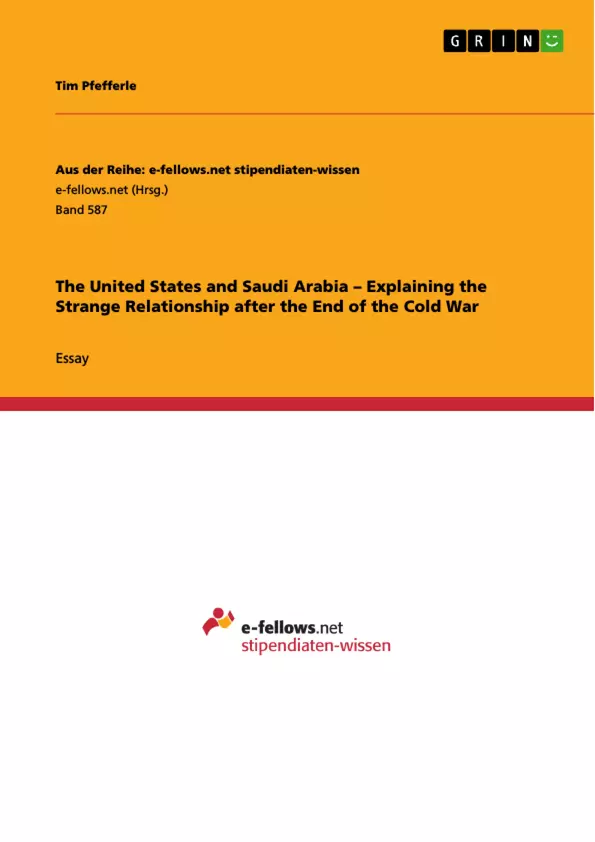An investigation into the basis for the US-Saudi relationship since the end of the Cold War, which argues that counterterrorism and regional containment of Iran have displaced the oil for security paradigm as the dominant explanatory models for the persistence of strong ties between the two countries.
Inhaltsverzeichnis (Table of Contents)
- Introduction
- Historical Background
- The Puzzle: What Explains the Strange Alliance between the US and Saudi Arabia
- The Oil for Security Paradigm
- A Different Perspective
- Conclusion
Zielsetzung und Themenschwerpunkte (Objectives and Key Themes)
This paper aims to explain the complex relationship between the United States and Saudi Arabia, particularly after the end of the Cold War. The traditional oil for security explanation is challenged as a comprehensive understanding of this relationship.
- The evolution of the US-Saudi relationship after the Cold War.
- The role of counterterrorism and regional security in shaping the alliance.
- The limitations of the oil for security paradigm in explaining the strength and resilience of the relationship.
- The influence of Iranian ascendancy on the US-Saudi partnership.
- The significance of Saudi Arabia's role in counterterrorism efforts, especially after 9/11.
Zusammenfassung der Kapitel (Chapter Summaries)
The introduction highlights the apparent paradox of the US alliance with Saudi Arabia, given its repressive regime and its opposition to Israel. The paper focuses on the post-Cold War period, arguing that the relationship shifted from a focus on anti-Communism and oil access to counterterrorism and regional security. The historical background section provides a brief overview of pre-Cold War US-Saudi relations, emphasizing the US objectives of maintaining territorial status, securing oil access, and containing Soviet influence. The paper then examines the challenges and paradoxes of the US-Saudi relationship, focusing on the contrasting ideologies, human rights concerns, Saudi Arabia's stance on Israel, and the issue of terrorism.
Schlüsselwörter (Keywords)
This paper explores the US-Saudi relationship, focusing on key concepts like the oil for security paradigm, counterterrorism, regional security, Iranian ascendancy, post-Cold War politics, and the influence of 9/11.
- Quote paper
- Tim Pfefferle (Author), 2012, The United States and Saudi Arabia – Explaining the Strange Relationship after the End of the Cold War, Munich, GRIN Verlag, https://www.grin.com/document/205797



